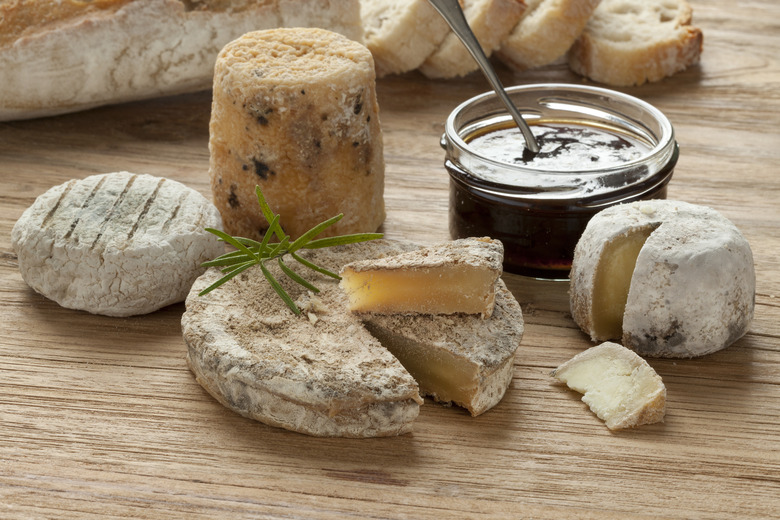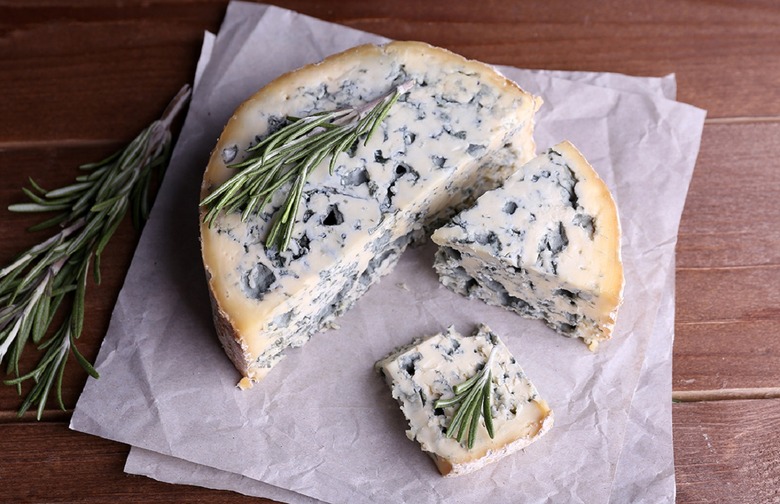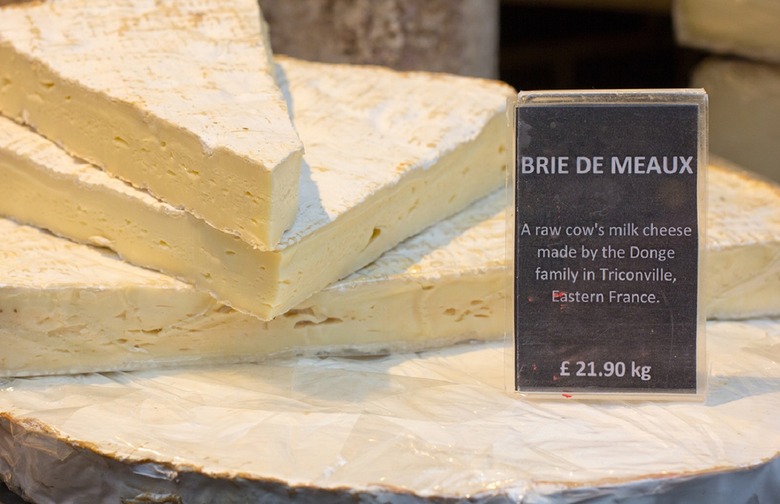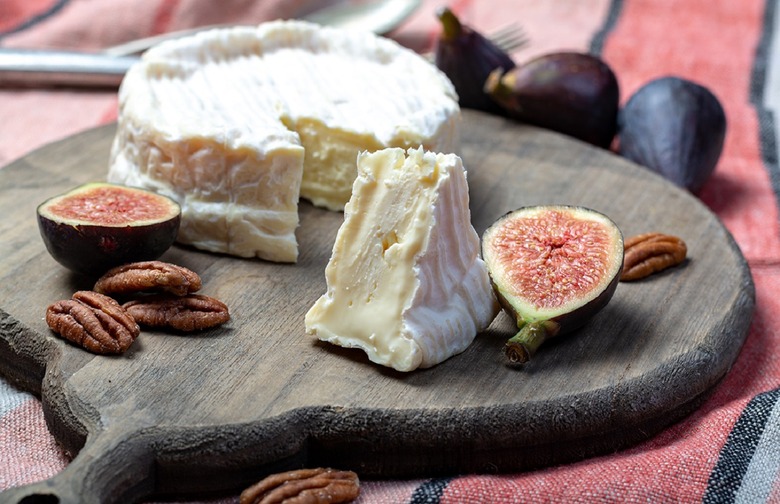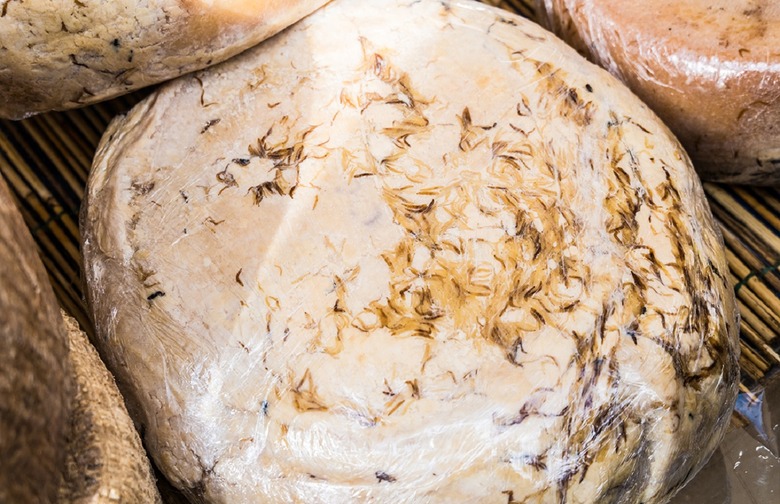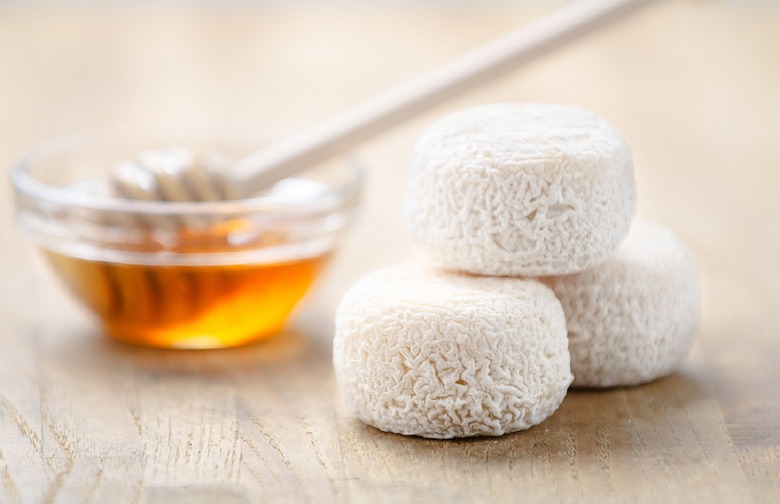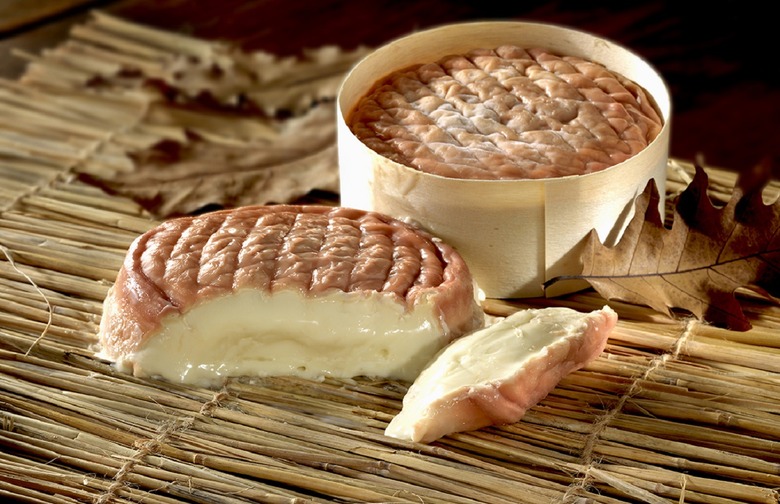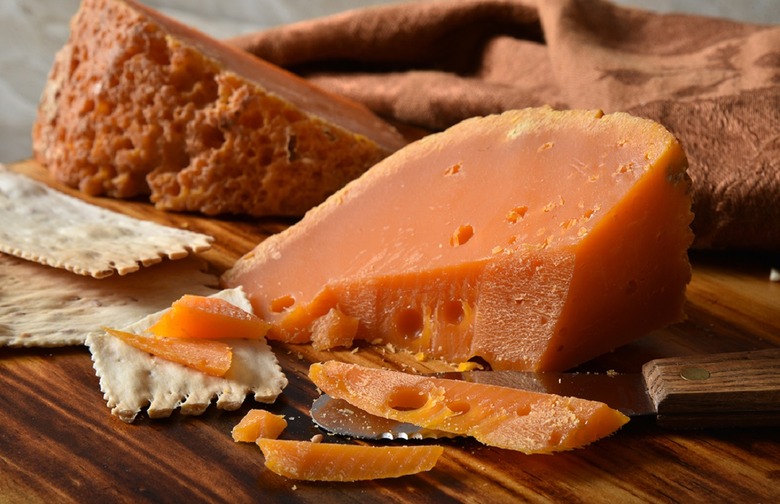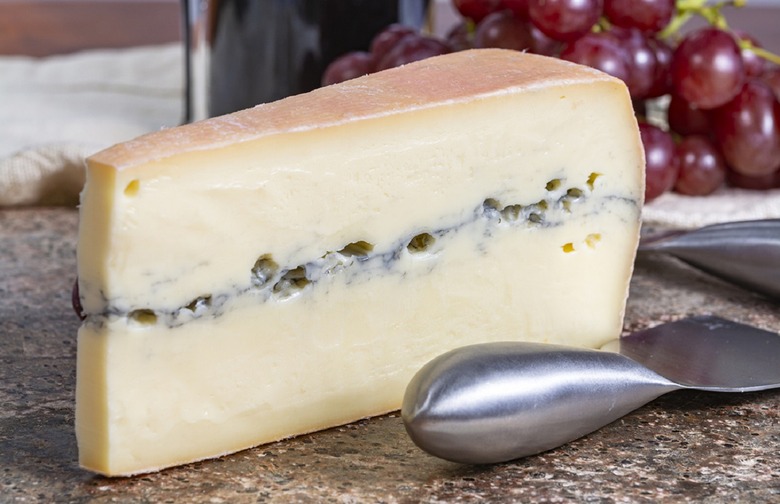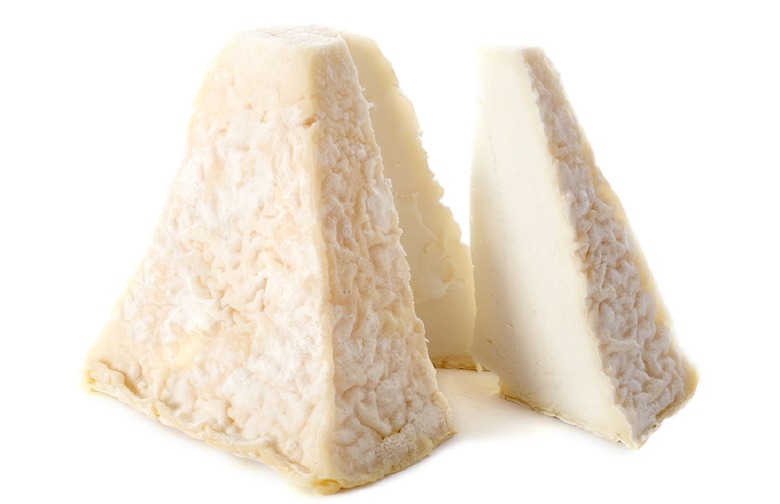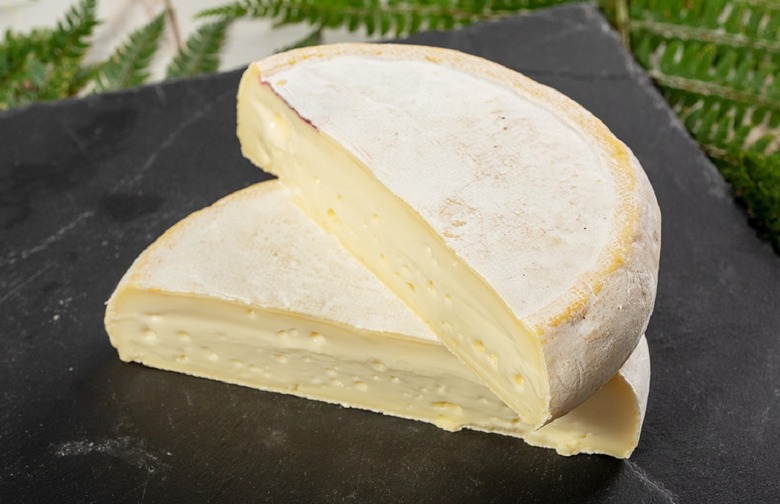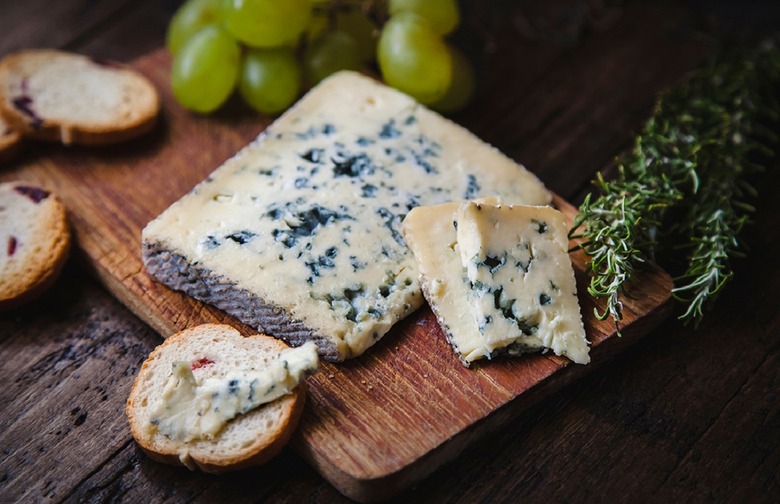These Cheeses Are Banned In The US
There are so many great reasons to eat more cheese. Dishes like raclette, gooey macaroni, and pizza topped with fresh mozzarella would be nothing without their rich, creamy cheeses. And for those interested in trying foods from around the world, cheese offers an extensive arena of flavors and textures to experience.
Anyone with a basic knowledge of cheese is familiar with the usual options. Parmesan, Gouda, sharp cheddar... You're used to seeing these at your local supermarket. But no matter how refined your cheesy interests, there are some cheeses you'll never, ever see in an American grocery store. Why? Because in the U.S., these cheeses are actually illegal.
The Food and Drug Administration has a lengthy and detailed set of regulations on cheese. Most of the banned cheeses are illegal in the U.S. due to the use of unpasteurized milk, or raw milk, in their production. The FDA deems these milks a public health concern. Foodborne pathogens can grow and spread; pasteurization is meant to kill off these germs. There are some cheeses banned for other health reasons, too. You might be surprised to discover the germy (and even flea-ridden) cheeses people eat abroad — but that you'll never find legally in the U.S.
Bleu de Gex
Yes, this is a type of blue cheese, but it's more special than that. This creamy, semi-soft, blue-veined cheese is made using unpasteurized milk in the Jura region of France, where it's aged for at least three weeks. You are only permitted to say a cheese is Bleu de Gex if it was made using the milk from cows in the town of Montbéliard and aged with a specific type of mold. Due to these distinct processes, the cheese itself is much stronger and has more flavor than other types of blue cheese. All rounds of Bleu de Gex are stamped with the word "Gex." If you buy a Gex-stamped cheese in the U.S., however, you're at risk for legal retaliation. The unpasteurized milk used to make it means that this cheese is not to be sold in America.
Brie de Meaux
You've probably tried brie, the cheese so delicious it's rumored that Louis XVI's last wish was that he taste it. But you haven't lived until you've tried this special variety of the famous French cheese. Brie de Meaux (which hails from the town of Meaux) is different from normal brie because it's made from unpasteurized cow's milk. Unfortunately, that's also what makes it illegal in the United States. But travel to Europe and you'll be able to taste the cheese fit for kings.
Camembert de Normandie
The type of Camembert you're used to seeing on the shelves has been modernized and does not rely on raw milk for its production. The original Camembert, however, was supposedly created with unpasteurized milk in 1791 by Marie Harel. Some rare producers still use this method and sell the cheese as Camembert de Normandie, which must be made with raw milk from the Normande breed of cattle. You'd have to travel to discover whether pasteurization has messed with the taste; only the pasteurized version is available in the U.S.
Casu marzu
Casu marzu translates to "rotten cheese," which (once you hear what it's made from) is actually an appropriate designation. This cheese from the Italian island of Sardinia is made from sheep's milk and contains live maggots. Yes, maggots. After the fermentation process, the cheese is left to rot among swarms of fly larvae. This alters the texture of the cheese so that it's soft and liquid seeps out. This cheese is illegal not only in the U.S., but also in the entire European Union. Since maggots can actually live inside the intestine (ew), consuming this cheese poses a significant health risk. If you really must try the fly-ridden round of casu marzu, you'll have to risk heavy fines for breaking the law by buying it on the black market. Oh, and you'll also be risking pseudomyiasis — the condition that can occur when you consume those bugs.
Crottin de Chavignol
This cheese is the most famous of the many goat cheeses produced in the Loire Valley. It's produced in Chavignol, France, a tiny village of just 200 residents. As this cheese ripens, it hardens and develops a stronger flavor. The hue also darkens with age, making these tiny lumps of cheese look like cattle droppings. One theory behind this cheese's etymology is that "crottin" is similar to "crotte," a French word that refers to animal dung — but it's banned not because it looks gross but because it's made from raw milk.
Époisses
Based on 16th-century methods learned from Cistercian monks, Epoisses' production process was refined over generations until it became one of the most beloved cheeses in all of France. That may not sound like a big deal, but in this case it's quite the feat — Époisses stinks. It's so pungent that Murray's Cheese insists the word époisses means "stinky but incredibly loveable" in French, even though the cheese is actually just named for a town. People all over the world adore this creamy cow's milk cheese, regardless of its pungent odor. Pasteurized versions of Époisses are available in the U.S., but the original unpasteurized variety can only be found elsewhere.
Mimolette
The name sounds pretty, but the cheese sure doesn't. The exterior of this cheese looks like it's covered in craters, and the inside is a deep orange hue that reminds some of Mars. But mimolette, a French cheese from Lille, is considered a delicacy to cheese lovers. But if eating bugs bugs you, you're not going to want to give it a try. Traditionally, mimolette is made by introducing mites to its exterior to refine the flavor. As such, the FDA put imports of the cheese on hold in 2013 according to NPR, saying that the large amount of mites could cause allergic reactions. Since, imports have resumed — though no one seems to know why, since the FDA ruling still stands. Though it's technically not supposed to enter U.S. borders, you can find mimolette in the States.
Morbier
Morbier is named after a town in the Franche-Comté region of France. In this region, cheeses are made with a black, ash-like line through the center. This line, traditionally, was made of actual ash and would separate the cheese made from cow's milk milked in the morning and cow's milk milked in the evening. These days, however, it's made of food dye and just one batch of milk is used. Still, the cheese is unique for its slightly bitter aftertaste. The cow's milk used is, of course, traditionally unpasteurized, and only pasteurized versions are available in the U.S.
Pouligny-Saint-Pierre
This cheese is often nicknamed "Eiffel Tower" or "pyramid" because it's delivered and sold in a pyramid-like casing, rather than a wheel like many other types of cheese. It's a goat cheese from the Loire Valley of France with a musty odor and a sour-to-sweet taste. It's an experience you'll never attain in America, though; the goat's milk is unpasteurized.
Reblochon
Reblochon is a mountain cheese from France. Made from full-cream, unpasteurized milk, the cheese is semi-soft, rich and flavorful. Tartiflette, a traditional French dish from the Savoy region of the Alps where the cheese is from, cannot be cooked without it (not as well, at least). But since it's unpasteurized, Americans have to travel elsewhere to taste it.
Roquefort
One of the world's most famous blue cheeses, Roquefort is a soft, crumbly cheese with a sharp, tangy taste. It can only be made in caves in the south of France, where it undergoes a lengthy aging process. It's also made from unpasteurized sheep's milk, and is therefore not legal in America. Cheeses aren't the only foods you have to travel to try. These iconic street foods from around the world are worth taking a trip for.
More from The Daily Meal:
17 Reasons You Should Eat More Cheese
The Food People Hate the Most in Each State
This Is What Happens to Your Body When You Quit Dairy
Bread Around the World: From Baguettes to Naan Gallery
25 Phrases Americans Say That Other Countries Don't Understand
